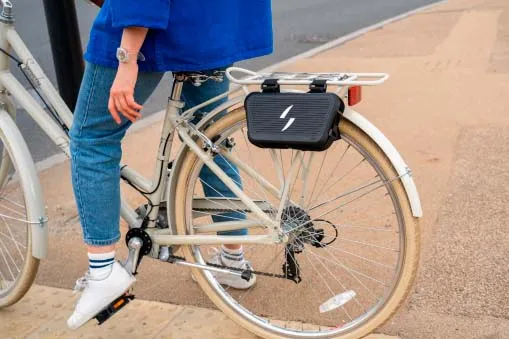Swytch has announced a new electric bike conversion kit called the Go, which is expected to cost less than £500 and was developed in response to the cost-of-living crisis, according to the brand.
Swytch makes two other ebike conversion kits: the Swytch Air and the Swytch Max. Both kits use the same motor and handlebar mount but have different-size batteries, and cost between £500 and £1,000.
The Swytch Go kit promises the same ride feel as these kits but has a simpler design in order to bring the cost down.
Swytch says its existing wait-list subscribers and customer base will be given an exclusive opportunity to pre-order the Swytch Go between 21 and 30 September, with the first kits expected to arrive in spring 2024.
BikeRadar spoke to Swytch co-founder and CEO Oliver Montague and test-rode the new ebike conversion kit to find out more.
A gap in the market
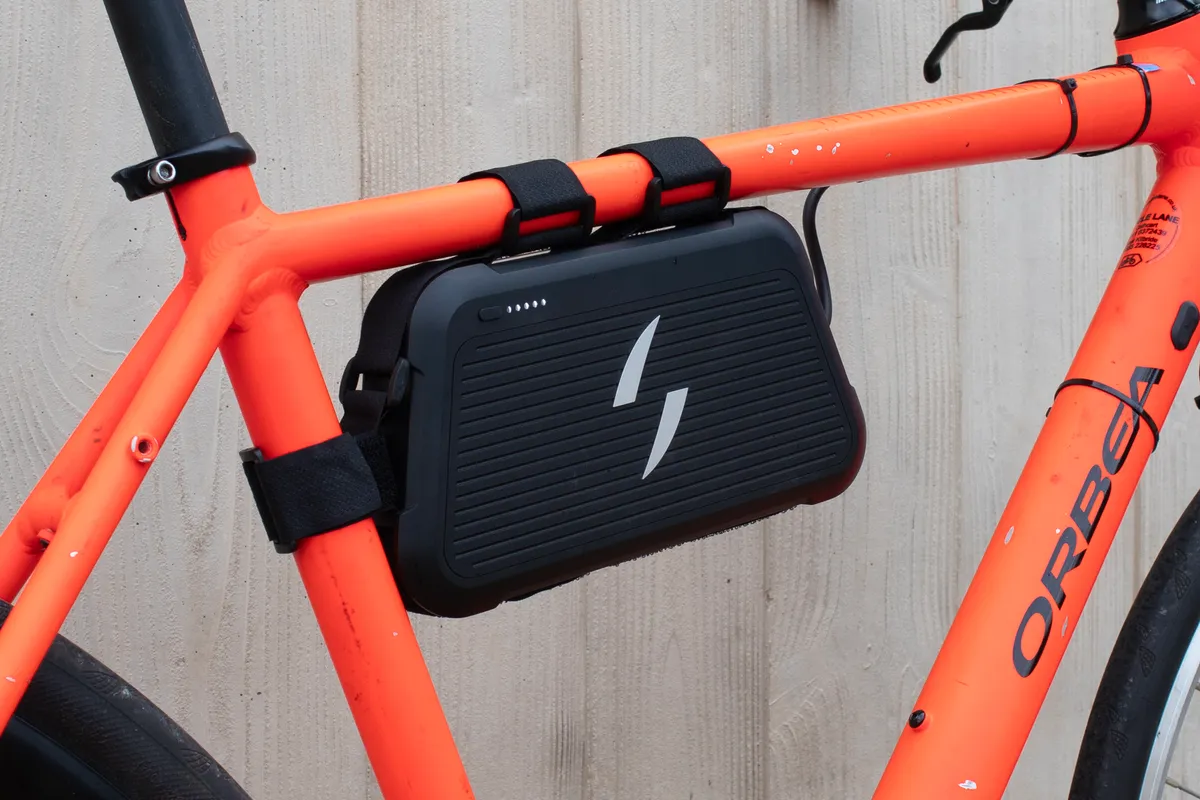
Swytch launched the Air and Max last year, having first debuted an ebike conversion kit in 2017 and re-launched in 2019.
At the time of last year’s launch, Swytch said enabling people to add electric power to a non-assisted bike with a conversion kit rather than buying a new electric bike would save them money.
The Swytch Go promises a lower point of entry to electric bike riding. The company says it was made in response to the cost-of-living crisis, which has seen more people save money by cycling.
Swytch CEO Oliver Montague says the Swytch Go was made in response to the sub-£500 ebike kit market, which he describes as “very big” and “very new”.
“I don’t think we’ve seen a well-designed, quality and reliable ebike kit in that price bracket before,” says Montague.
While he’s unwilling to speculate on the size of the sub-£500 ebike conversion kit market, Montague says he thinks it’s at least as big as Swytch’s existing market segment.
Montague says Swytch sold close to 30,000 units at its main launch last year, giving an indication of the size of the brand’s existing market segment.
Similar but simpler
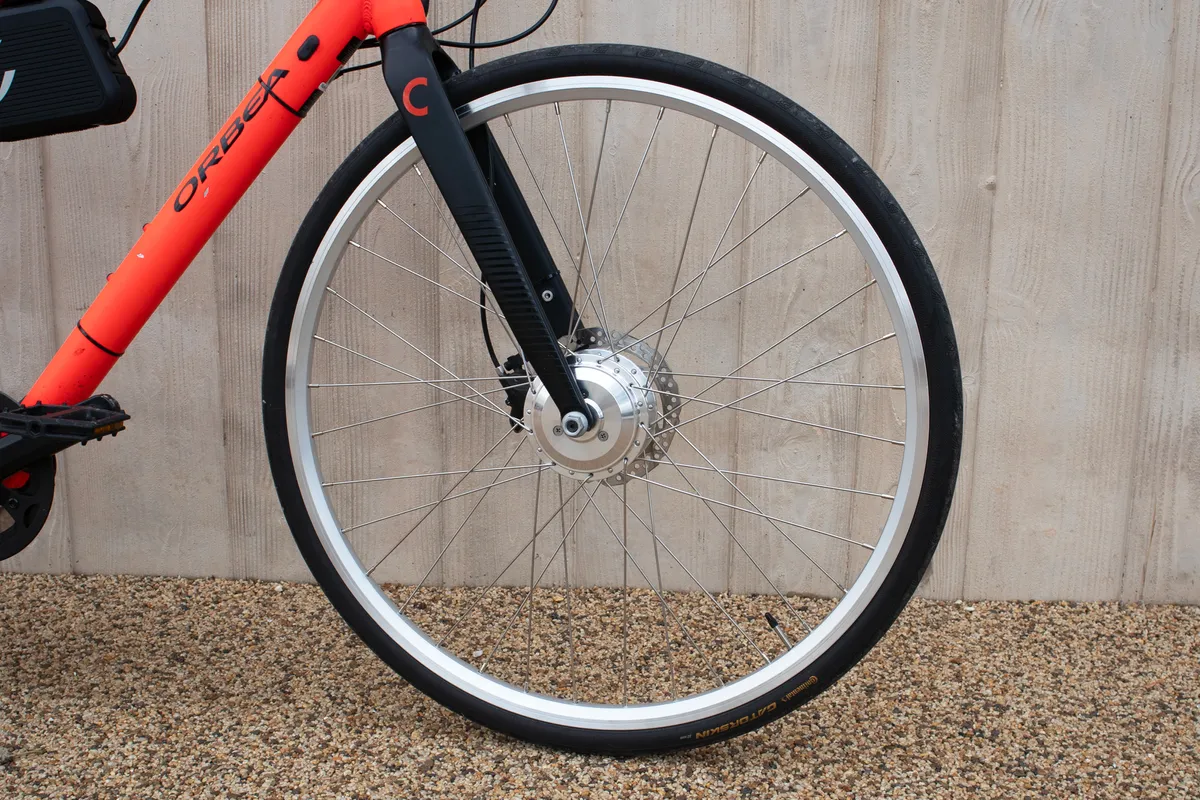
Montague says the Swytch Go has the same power, speed and torque as the company’s Air and Max kits.
“We set a mission about 12 months ago to engineer a simplified, cost-reduced version of the Swytch kit. [The Swytch Go] has the same power of 250Wh, the same range of over 20 miles, the same top speed of 15mph, and the same basic setup,” says Montague.
The 15mph top speed is the maximum allowed for ebikes under UK ebike law, but Montague says matching performance between products is key for Swytch.
“One of the commitments of our product range is every Swytch kit will feel the same to ride. We’ve made the Swytch kit as good as we can to ride and we’ll never go backwards in terms of quality,” he says.
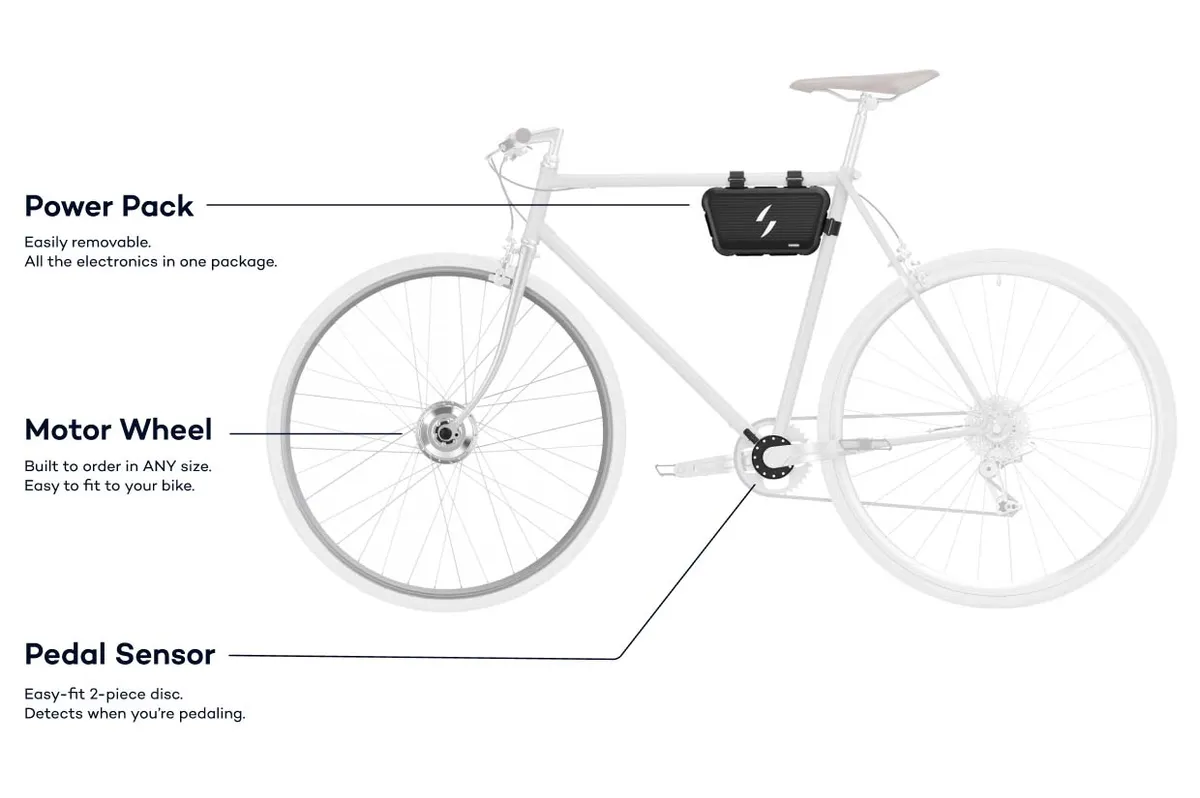
Swytch has reduced the cost of the Go compared to its other products by simplifying the design of the kit.
Montague explains Swytch’s Air and Max kits use 20 plastic or metal custom parts engineered by the company.
“All those parts achieve is our patented design that allows it to be clipped on and off instantly. The Swytch Go is just two pieces with all the contents inside,” says Montague.
In reality, this means manufacturing costs are far less than the Air and Max kits.
Another cost-saving design choice is how the Go attaches to your bike. The Air and Max batteries sit in a proprietary handlebar mount, while the Go uses a set of simpler – and cheaper – Velcro straps.
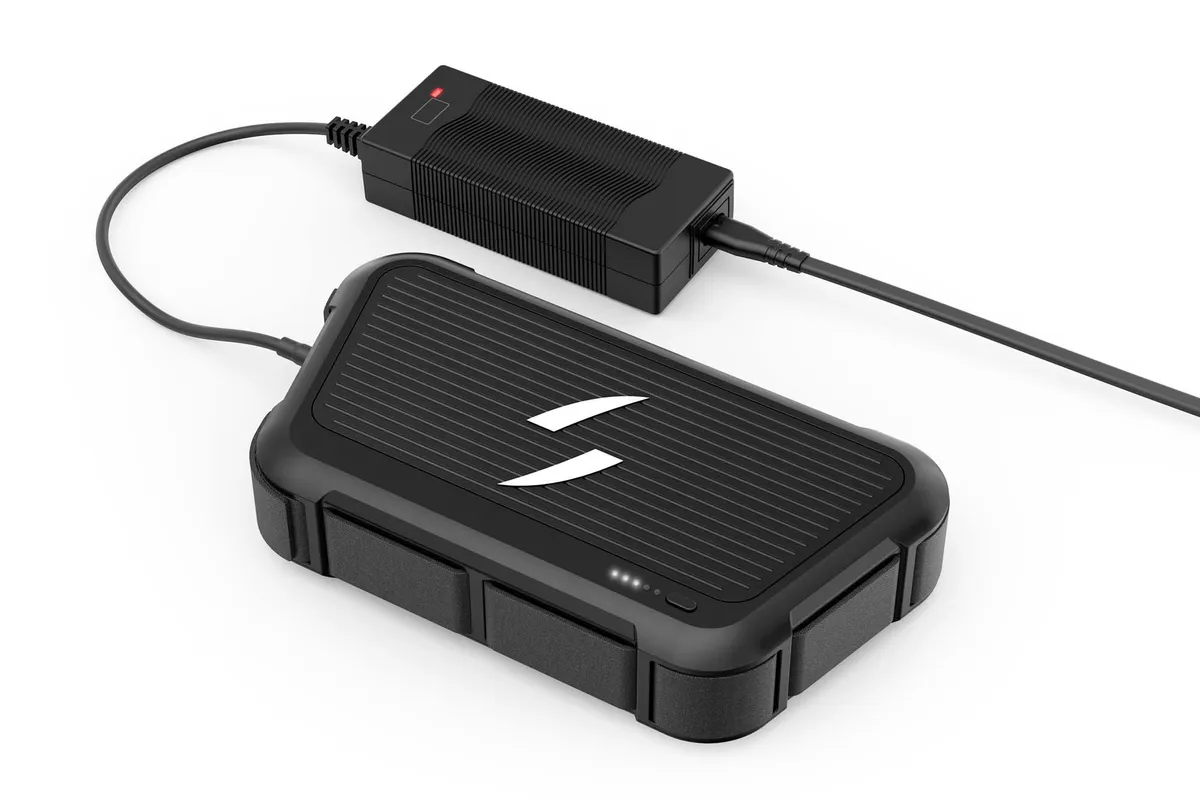
While the Air and Max kits don’t require you to plug in wires when they are set up on your bike, the Go has a single cable that attaches to the kit’s motor and pedal sensor.
In a further bid to simplify production and reduce cost, the Go will be compatible with fewer bikes than the Air and Max kits.
The front-hub electric bike motor of the Air and Max kits is available in any wheel size, but the motor of the Go will only be compatible with 26in or larger wheel sizes.
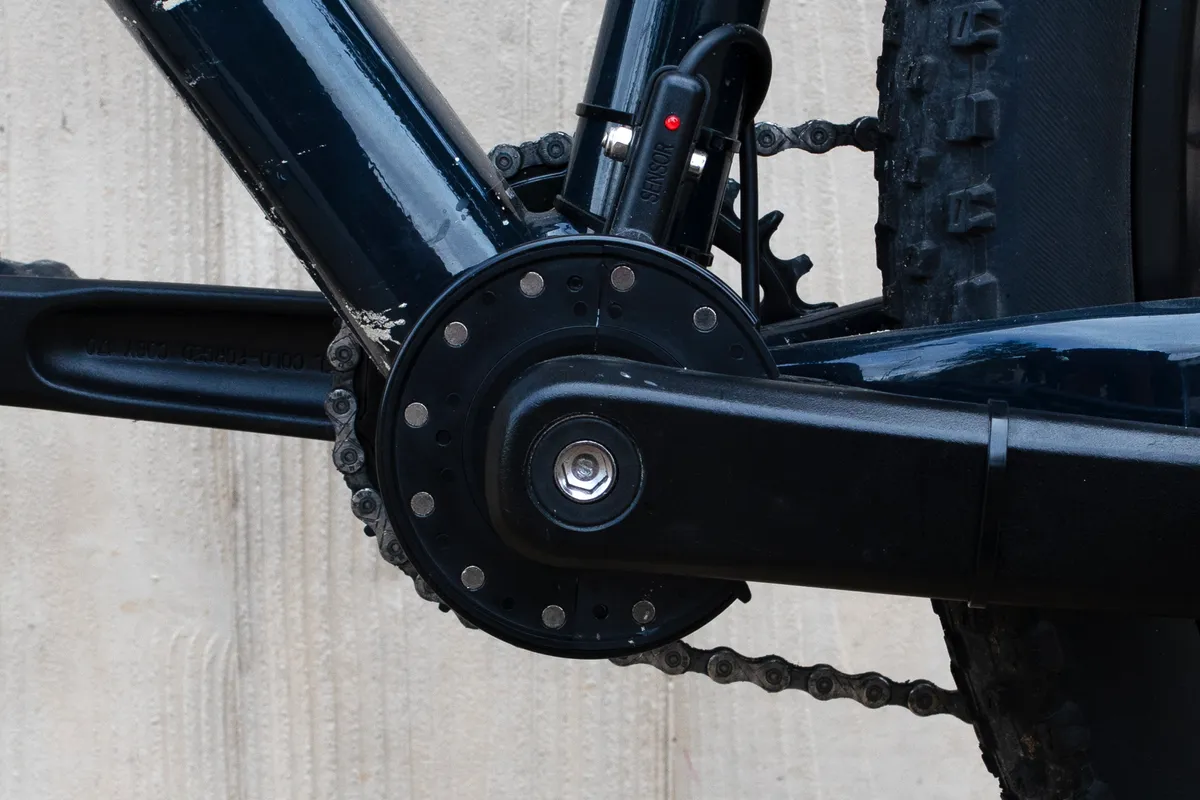
This means you will still have to opt for the Air or Max kits for Bromptons and other folding bikes.
All these cost-saving measures fall under the same over-arching theme, which is applicable to many if not all mass-produced goods, and explains the simpler Go range.
“It all comes down to the supply chain strategy. The supply chain strategy for the Air and Max kits is very complex because it’s a very advanced product.
“The supply chain strategy for Go is very simple and basic, and it’s all part of keeping the cost down, so as a result there are fewer options available,” says Montague.
Why is the Swytch Go only available for pre-order?

The Swytch Go will initially only be available for pre-order between 21 and 30 September to Swytch’s existing waiting list and customer base.
“The reason we always use pre-order for a new product like the Go kit is mainly to prove demand and viability of the product,” says Montague.
“The size Swytch is now, we would need more than £10 million just for six months' supply of kits. We would never risk £10 million on inventory to start selling in April,” he explains.
Pre-orders therefore enable Swytch to forecast supply, manage business risk and give it the confidence the kits it manufactures will be sold rather than left sitting on shelves.
Montague says this should help Swytch get to the point where it is selling kits from stock in the long-term.
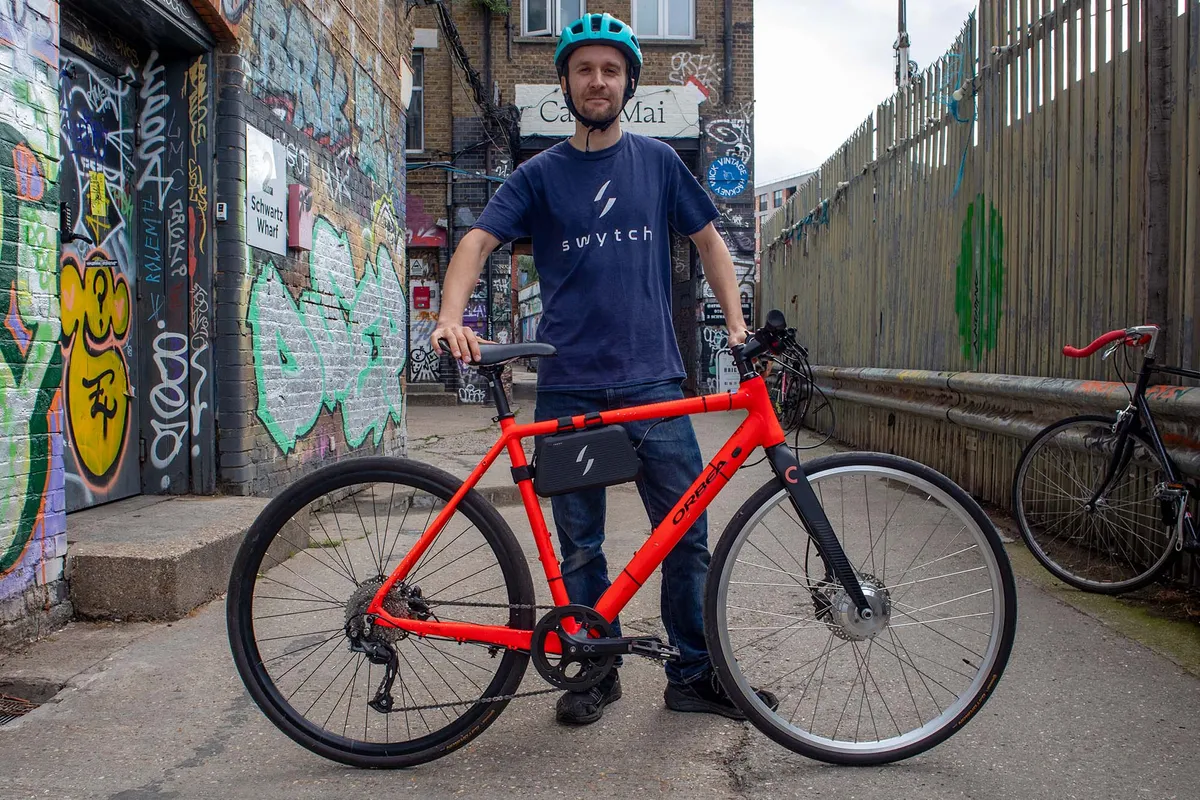
The aim will be to have enough stock to sell Swytch kits in brick-and-mortar retail stores without any sales to shops pushing back the delivery of a kit sold through pre-order, according to Montague.
Swytch raised £3.8 million in an investment round last year, which followed an initial investment round of £80,000.
Montague says to maintain shorter delivery times next year, Swytch is raising additional funding from investors specifically for working capital, the money a company has access to in order to meet short-term needs.
However, the problem with getting its ebike conversion kits into shops and quickly delivering kits to fulfil pre-orders is, according to Montague, “having too much demand”.
This might be a good problem to have, but Montague says pushing back a more conventional in-stock model will be a good thing to avoid.
Swytch Go first ride review
Stan Portus, content editor
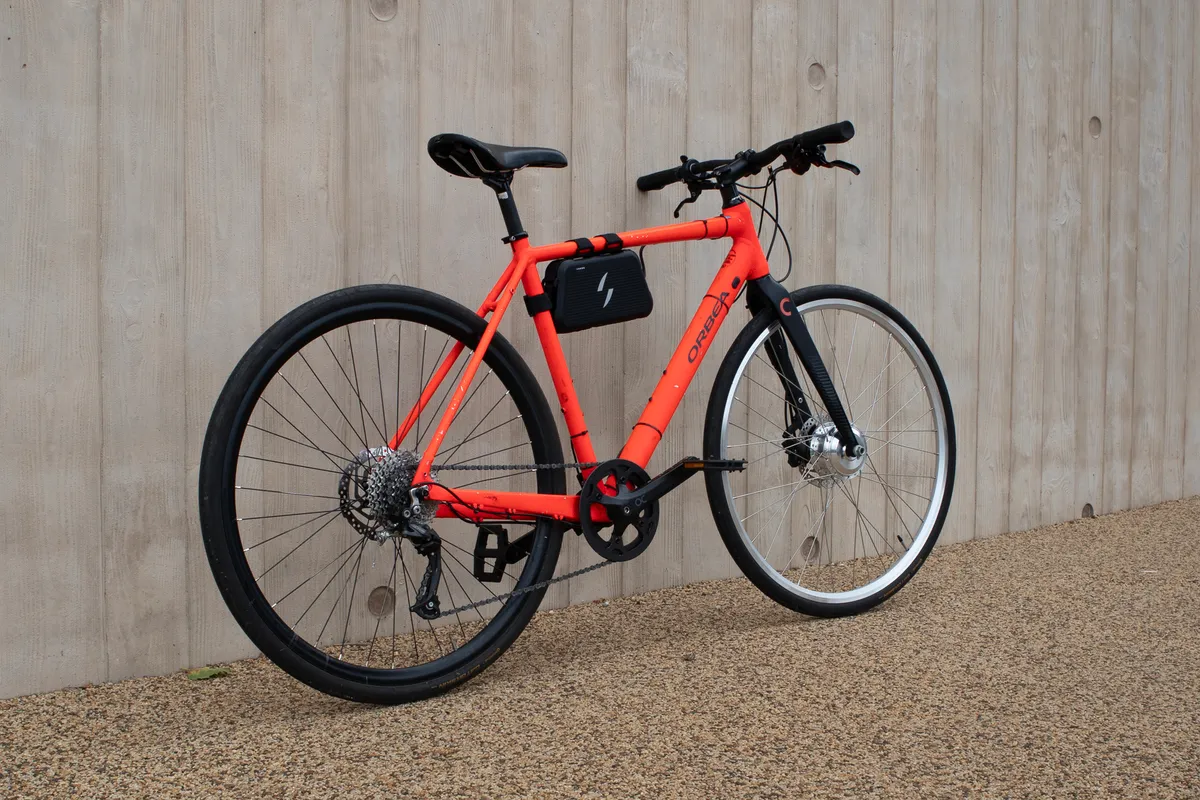
I tested a pre-production version of the Swytch Go around the Queen Elizabeth Olympic Park and the canal towpaths of Hackney Wick, London, where Swytch is based, with the company’s CEO Oliver Montague.
Montague got me to attach the Go kit to the test bike’s frame. Putting it on the bike with its three Velcro straps was as straightforward as installing a frame bag, and plugging the single cable into the port that led to the motor was all it took to get going.
I test rode Swytch’s pricier kit at Eurobike 2022 and the Go matches the other Swytch kit in terms of how the assistance kicks in. Three or four turns of the cranks and the Swytch motor gave me an assured level of assistance.
Riding along flat and quiet paths, the speed and power of the motor was more than sufficient.
When I rode my Swytch Go-equipped bike up a steep, cobble-covered ramp on the towpath, though, I was appreciative of the motor, barely having to pedal to keep my pace up.
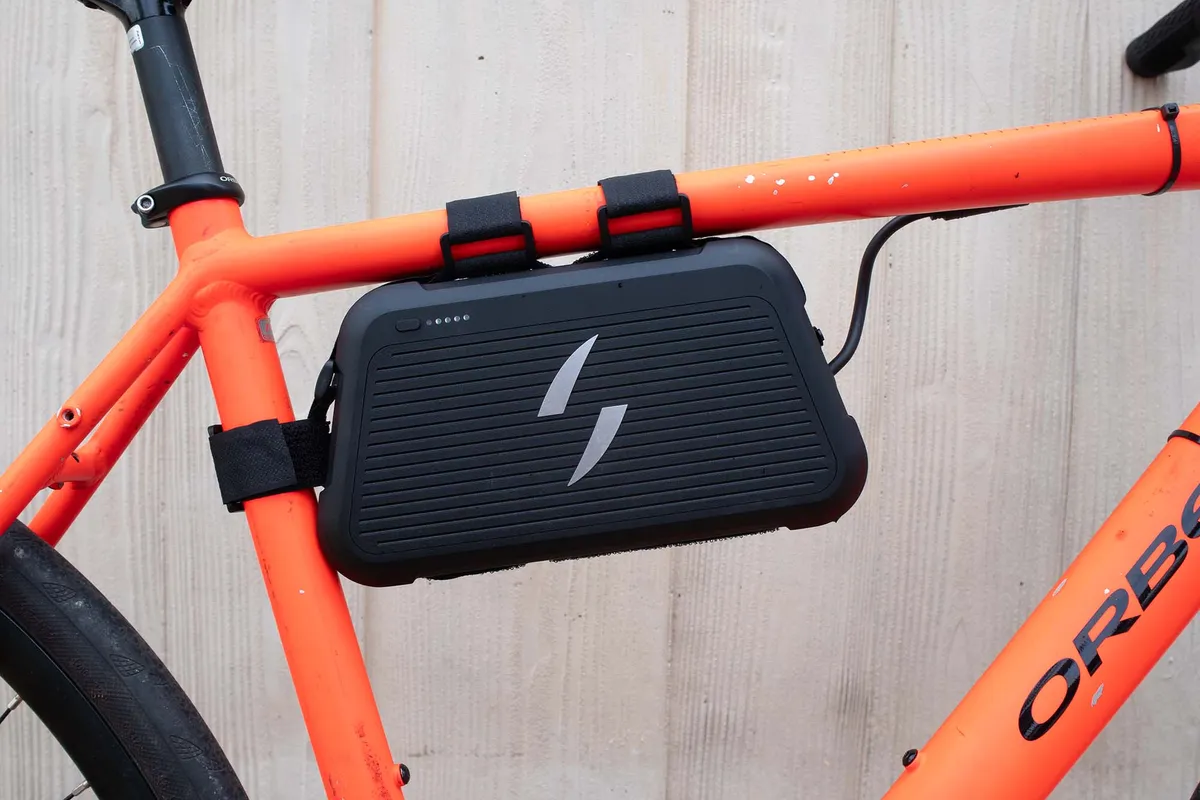
The Swytch Go only provides one level of assistance as standard, without the controller of the other Swytch kits, which enables you to up the assistance if you want to fly along.
This wasn’t really an issue for me, and I liked the simplicity of the system in the same way I enjoy jumping on an electric rental bike, such as a Lime bike, and letting it carry me along without much thought.
The fact you can adjust the assistance on Swytch’s pricier kit makes for a more engaged and arguably more fun ride. However, whether or not this is a concern will depend on what you want from an ebike.
If you want to really feel and control what’s happening with your bike, you may not think too much about spending the cash on a Swytch Air or Swytch Max. If it’s just the convenience of an extra push you’re after and you want to save some money, the Swytch Go should tick all the right boxes.
